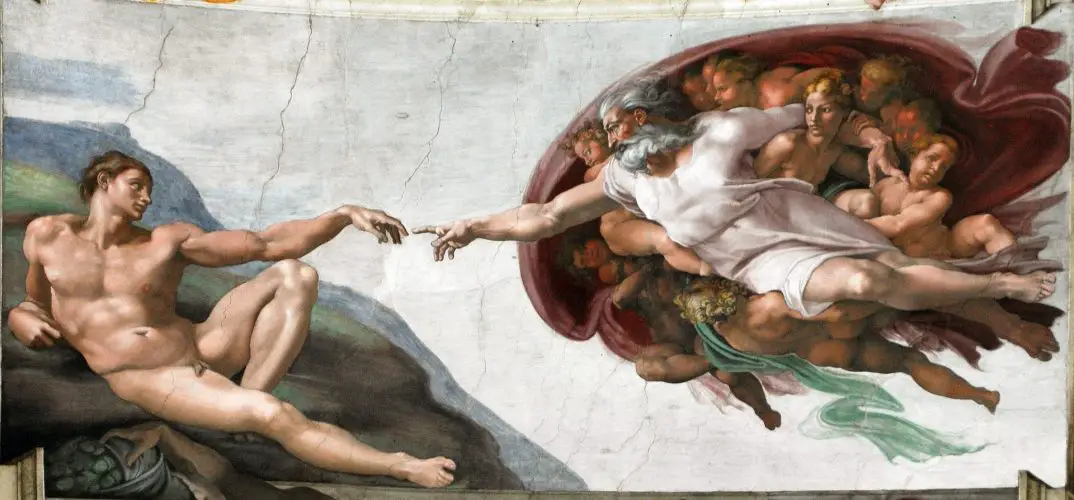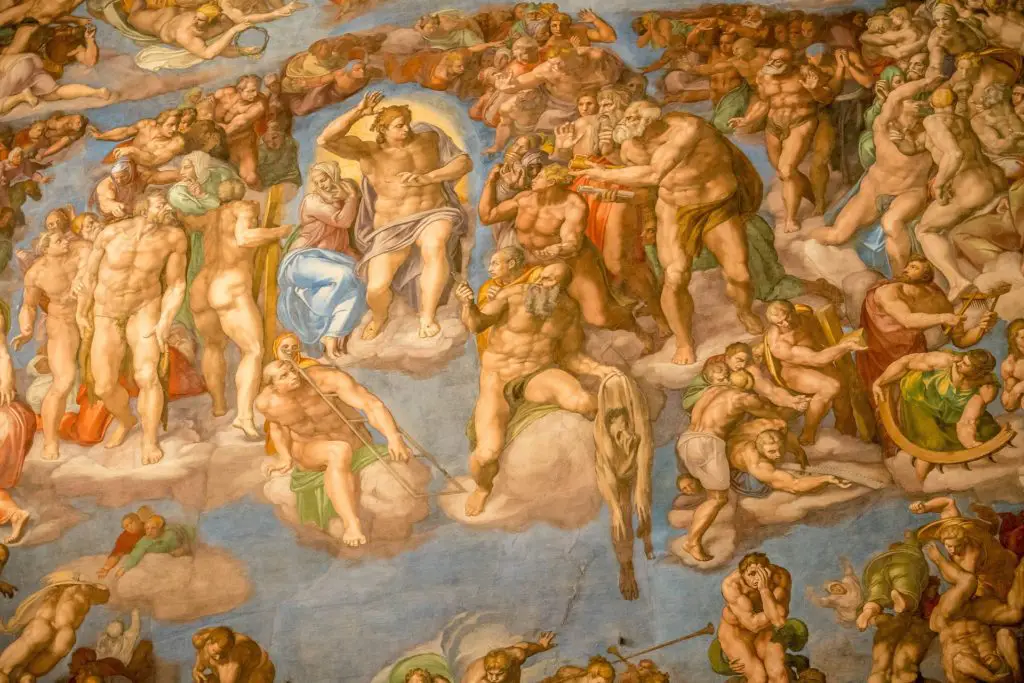5 Reasons Why You Need Binoculars In The Sistine Chapel

Without having seen the Sistine Chapel one can form no appreciable idea of what one man is capable of achieving.
Johann Wolfgang Goethe, 23 August 1787
An impressive quotation by Goethe, which gives us the idea of the grandeur of this work of art. So splendid that you want to enjoy every detail of it.
In this regard, in this article I will explore 5 reasons why you need binoculars in the Sistine Chapel!
1. Who Painted the Sistine Chapel?
The Sistine Chapel is one of the most celebrated and visited places not only in Rome, but all over the world.
It takes its name from Pope Sixtus IV who ordered the construction of the Chapel and created the Vatican Archives.
When thinking of the Sistine Chapel you certainly have Michelangelo in mind. As a matter of fact, he painted the frescoes on the ceiling (known as the Sistine Ceiling) and on the west wall behind the altar.
However, what not everyone knows is that Michelangelo was not the only artist who worked in the Chapel.
In fact, Lorenzo the Great sent a team of painters from Florence to Rome to decorate its walls: Perugino (the coordinator, a great artist from Umbria), Botticelli, Pinturicchio, Ghirlandaio (who was Michelangelo’s master) and Rosselli were considered as the greatest artists at that time.. and they created a wonderful work of art indeed. In 1482 they completed the series of frescoes depicting the “Life of Moses” and the “Life of Christ”, the papal portraits above and superb trompe-l’œil drapery below.

Also, the ceiling was originally painted by Pier Matteo d’Amelia and it depicted a wonderful night blue sky scattered with stars. Some years later, however, the ceiling cracked and the fresco was ruined. It was then that the main actor entered the scene: Michelangelo was commissioned the vault by the new Pope Julius II in 1503. The Renaissance had just begun.
—> You may also like
The frescoes from the Florentine painters (realized in only 2 years!) together with Michelangelo’s “Last Judgement” and the “Creation of Adam”, have been the reason why millions of tourists from all over the world come to the Vatican every year.
The “Creation of Adam” is one among nine stories from the book of Genesis on the ceiling frescoes, together with the other well-known “Original Sin and Banishment from the Garden of Eden”. Here you will see how Michelangelo turned beautiful Eva into an ugly old woman: it took him no less than 9 days to complete her figure.
Thus, take your time to enoy all the frescoes, characters and details of this wonder. I’m sure you will remember it long after you have come back home.
—> You may also like
2. What Can You Not Bring into the Sistine Chapel
Just a reminder that, as all touristic places, there are rules to follow and the Sistine Chapel, a part of the Vatican Museums, is no exception.
Here I listed some of regulations, as the Chapel is no ordinary museum and you want to check them out beforehand. Keep in mind that different rules apply to the museum and the Chapel: you are allowed to bring cameras and video cameras into the museum and to take photos, although this is not permitted inside the Chapel.
Remember that inside the Sistine Chapel you can’t:
- bring any camera or video stands and tripods, including selfie-sticks.
- use amplified microphones.
- take photos or film. Staff are authorised to remove any such photographs or recordings. Also, you may not make sketches or drawings without prior permission from the museum management.
- use your mobile telephone.
Once you’re done with your visit, you may take the exit near the back which will directly lead you back to St. Peter’s (a shortcut!).
For more info on what you cannot bring into the Sistine Chapel, please visit the official website.
—> You may also like
Tourist Tax in Italy: the 2021 Full and Complete Guide with All Rates
3. Why Do You Need Binoculars In The Sistine Chapel?
As mentioned above, some items are not permitted inside the Vatican Museums.
However, you are allowed to bring in binoculars.
Let’s see the reasons why you need binoculars in the Sistine Chapel.
Height
Michelangelo was such a great artist. So great that he would paint at no less than 21m (68ft) height, which corresponds to 7 stories! Of course the biggest figures can be seen to the naked eye, but as far as details are concerned, it’s very hard to fully enjoy them without lenses.
Small figures
At the beginning of his work, Michelangelo depicted stories like they were paintings not frescoes. Therefore, he started painting small characters. Even if he realized at some point that at that height those figures were too small to be fully appreciated and started making them bigger, some parts of the frescoes are very tiny!
Details
There are a lot of details that you don’t want to miss: the frescoes on squinch arches (pennacchio) and lunettes (lunetta), for example. In fact, if you pay attention you will be able to see Jesus’ family in one of them: Mary, Jesus and his grandfather Jacob.
Real characters
Some depicted characters were real, such as young Pope Julius II and artist Perugino (self portrait in “Delivery of the Keys”). Have fun finding them out!
Different techniques
Michelangelo and the other artists experimented and tried different techniques, such as the mirror image. In order to replicate nudes in the corners of square frescoes in a fast way, Michelangelo realized some sort of paperboard with the figure shape and used it to make the three other figures in the corners.
Check it out yourself! You will see that they have the same outline and shape.
To sum up, if you want to make sure you won’t miss any of these fabolous fresco details, you may want to look into a good pair of binoculars.
—> You may also like
Where to Store your Luggage in Train Stations, Airports and for Free in Italy
4. Other Places Where To Use Your Binoculars
Besides, remember that your pair of binoculars may come in handy also on other cultural sites in Italy.
You can do bird watching while enjoying the astonishing view of Roman ruins or in the beautiful villas like Villa Ada, Villa Pamphili, or else the natural reserve of Valle dei Casali and Appia Antica Park, perfect places for birdwatching.
Not only in Rome, you can use your binoculars to admire the magnificent mosaics housed in Saint Apollinaris at Classes in Ravenna. Enjoy a close up view of their details as I can assure they are worth it!
Enjoy your visit in the Sistine Chapel! I’m sure you will be impressed by its magnificence and beauty.
—> You may also like

